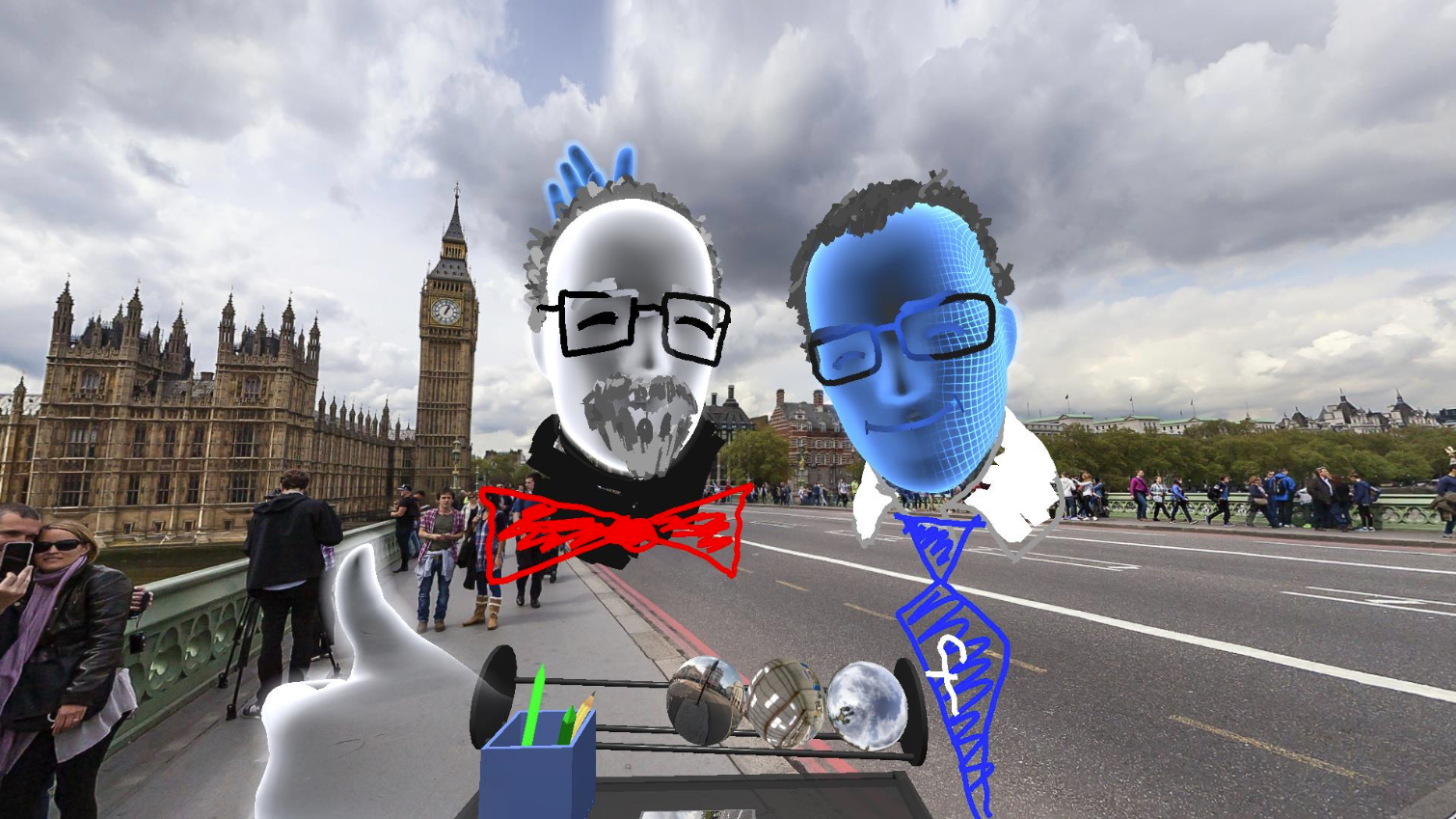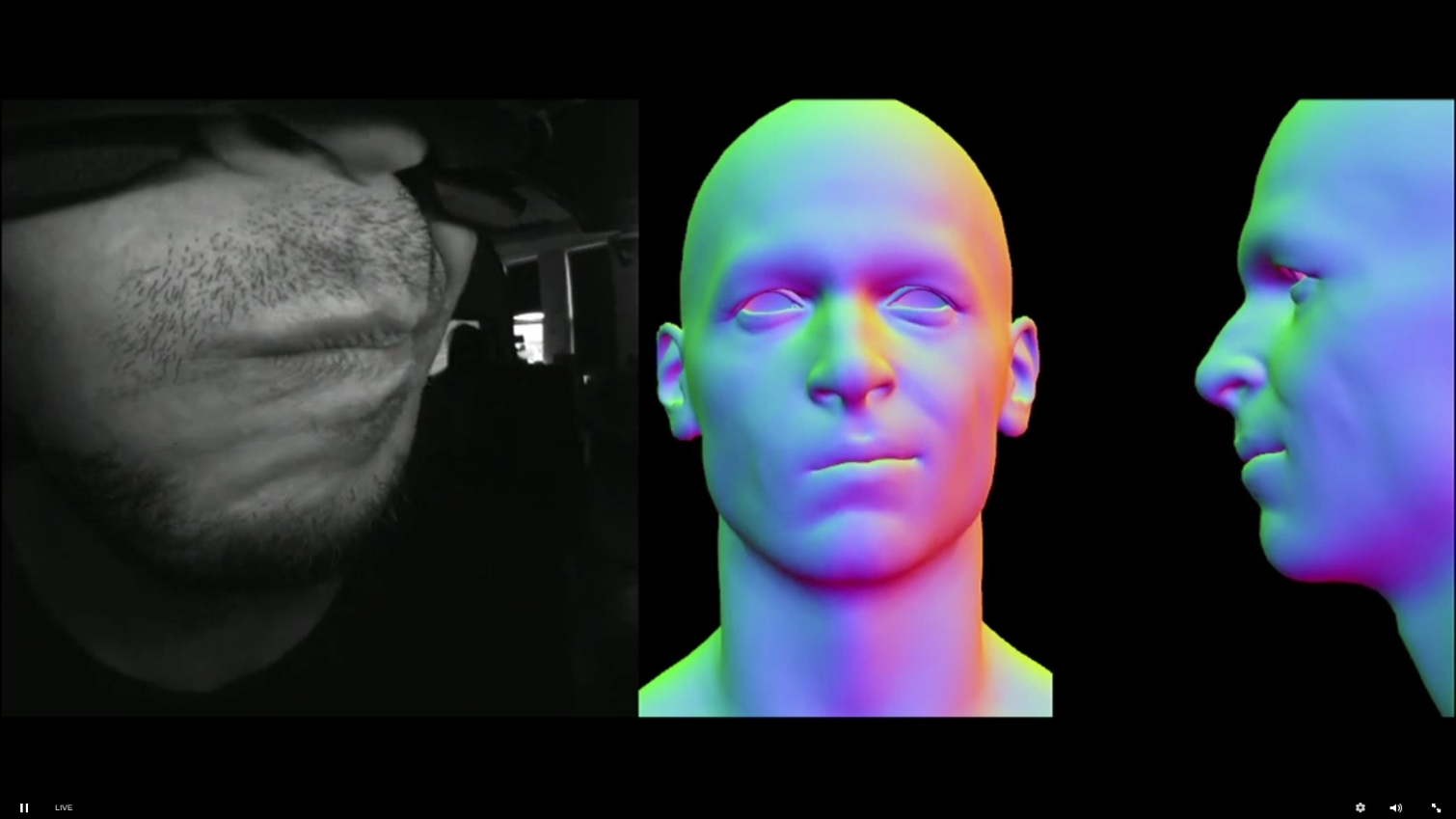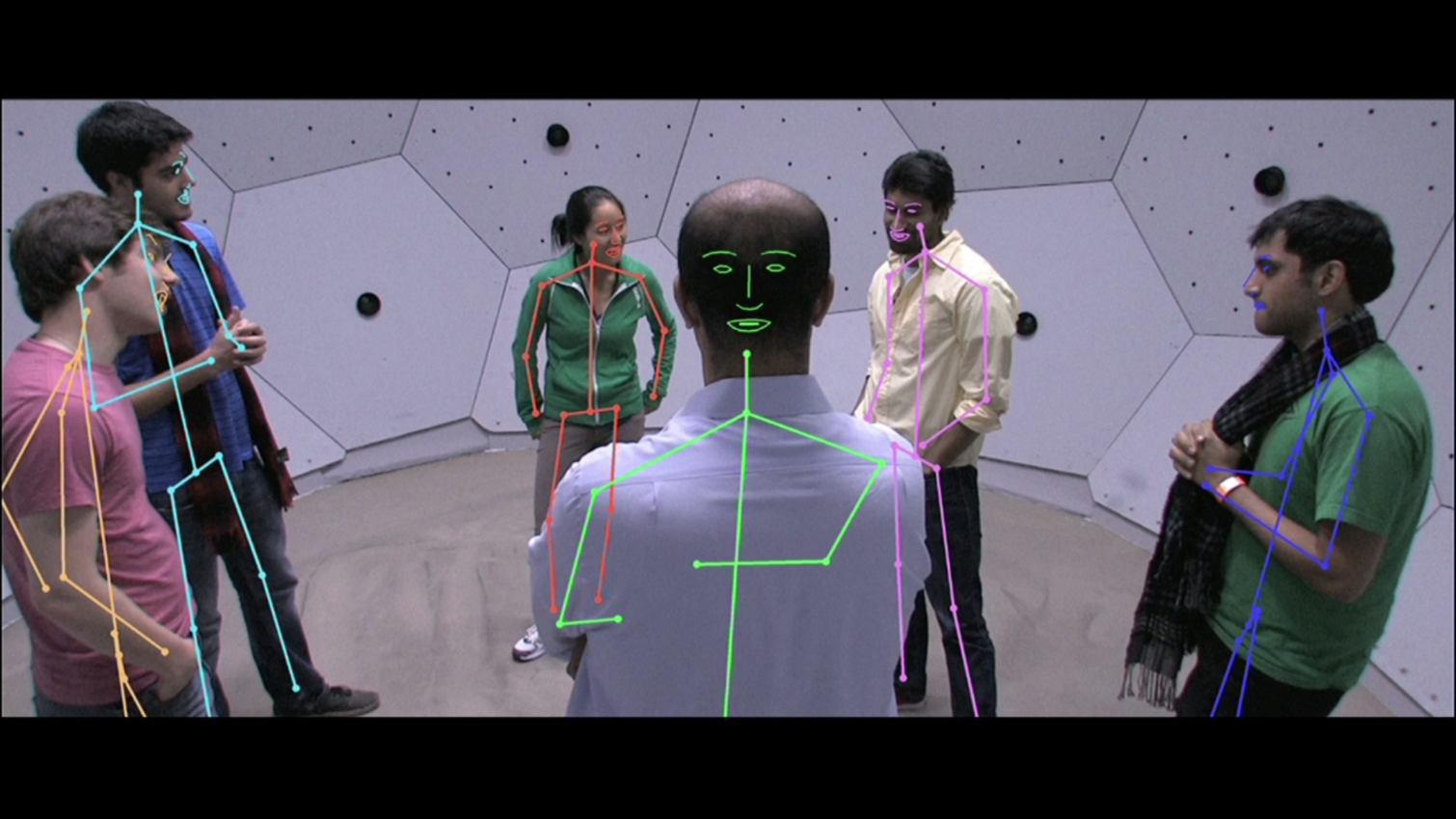Facebook Working To Bring Real Social Presence To Virtual Reality
During the Facebook F8 developer conference keynote speech, Mike Schroepfer, Facebook CTO, gave a live demonstration of some of the work the company is doing to make virtual reality a social experience.
Schroepfer was physically on stage at the F8 conference in San Fransisco, and he was joined in virtual reality by Michael Booth, of Facebook’s social VR team, who was actually located 30 miles away at his office in Menlo Park. Schroepfer and Booth both shared the same virtual space and toured different virtual locations together. The two of them experienced being inside 360-degree photos of different locations, including sightseeing in London and a Boeing hangar where Facebook’s Aquila UAV is being built. Schroepfer and Booth even took a VR selfie of themselves in London.
The demonstration shown featured avatars that were very similar to the one seen in the Toybox demo video. The avatars in the social VR demo are a little bit more detailed, featuring glasses and hair. You can even decorate each other with drawings of clothing items, such as the bowtie and necktie shown in the video.
This demonstration showed an example of a social interaction in virtual reality, but Facebook said it has a long way to go before achieving true social presence. Currently, VR can relay some body language, namely hands and head motion, plus positional tracking, but these offer only a small fraction of the social cues we perceive in person to person interaction.
Facial expressions and eye movement are both very important tools for communication, as are full body movements. In the future, Facebook hopes to have tracking for the full range of human movement and social cues, but the company said that animation rigs that can replicate the full range of facial movements don’t exist yet. Facebook has been working on mouth expression tracking using an HMD-mounted camera with some success, but the company said that it can't yet replicate all the subtleties.
Facebook noted that algorithms for eyes and other physical traits will still have to be developed. In order to figure out the best way to create algorithms that can accurately predict and replicate body movement, the company built a panoptic studio that lets it capture movements from all directions. Facebook expects to be able to create algorithms that can do this, by using the data that is collected from the panoptic studio.
If Facebook meets its goals, we’ll be able to experience genuine emotional connections remotely, through virtual reality, in the not too distant future.
Get Tom's Hardware's best news and in-depth reviews, straight to your inbox.
Follow Kevin Carbotte @pumcypuhoy. Follow us on Facebook, Google+, RSS, Twitter and YouTube.
Kevin Carbotte is a contributing writer for Tom's Hardware who primarily covers VR and AR hardware. He has been writing for us for more than four years.
-
overgrower Canceled my OR order because of the delays. AfterReply
seeing the all in one vr device I feel its better to wait for a 2nd generation device and just use a gear vr for video content. -
uglyduckling81 ReplyCanceled my OR order because of the delays. After
Buy yourself a Vive and profit.
seeing the all in one vr device I feel its better to wait for a 2nd generation device and just use a gear vr for video content. -
joe nate ReplyHTC Vive = Gaming!
Oculus = this social crap
That's such a loaded statement. Oculus actually has a healthier game lineup at launch. The Vive is better for tech demo experiences at the moment due to room scale and motion controllers.
They both have a lot of room to grow in all directions. -
HaB1971 Sorry but no... this has made me not want to go down the VR route... I use my computer at home (I'll read and comment here at work only...) to get away from "Social" to bury myself into the game I am playing which is not multiplayer or online... I play Elite Dangerous in Solo.. because I do not want other people in my gaming experiences... i'll stick with Track IR...Reply -
uglyduckling81 Reply17816025 said:Sorry but no... this has made me not want to go down the VR route... I use my computer at home (I'll read and comment here at work only...) to get away from "Social" to bury myself into the game I am playing which is not multiplayer or online... I play Elite Dangerous in Solo.. because I do not want other people in my gaming experiences... i'll stick with Track IR...
Only a person that hasn't tried VR would say that. My advice would be if you don't want to buy into VR then don't try it. It's a game changer and once you dabble there is no going back I'm afraid.
VR Hype Train!!! Choo Choo!!! -
HaB1971 Reply17816025 said:Sorry but no... this has made me not want to go down the VR route... I use my computer at home (I'll read and comment here at work only...) to get away from "Social" to bury myself into the game I am playing which is not multiplayer or online... I play Elite Dangerous in Solo.. because I do not want other people in my gaming experiences... i'll stick with Track IR...
Only a person that hasn't tried VR would say that. My advice would be if you don't want to buy into VR then don't try it. It's a game changer and once you dabble there is no going back I'm afraid.
VR Hype Train!!! Choo Choo!!!
Well you are wrong, I have tried a DK1 and was initially excited... but now... I want no part of it -
grilledcheez instead of getting together and doing stuff we can now just drink in a circle in a virtual room and play games in that room. Reminds me of that movie with Bruce Willis where everyone has a robot version of themselves and walks around outside like that. Except, its like in VR. How long would it take before men are being tricked by fake women avatars... dear lord... this is scary and cool at the same time.. at least you could sorta hangout with your friends living in different areas of the world.Reply


